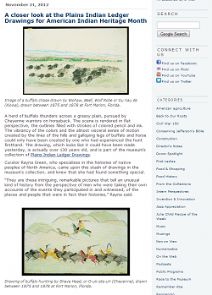As COVID-19 deaths spiked in 2020, Suzanne Firstenberg’s public art installation "In America: How could this happen…"
History Explorer Results (15)
Related Books (4)

Grade Range:
K-12
Resource Type(s):
Artifacts, Primary Sources
Date Posted:
11/10/2008
While leg makeup has been commercially available since the 1920s, it wasn't until rationing was introduced during the World War II that the product became an essential commodity for many American women. Unable to procure silk or nylon hose, many women resorted to painting their legs with products

Grade Range:
K-12
Resource Type(s):
Artifacts, Primary Sources
Date Posted:
10/27/2008
Andreas Vesalius (1514–1564), an early European physician and professor of medicine, wrote an important treatise on the human body, published in 1543. He provided detailed illustrations that demonstrated muscle structure and other features of human anatomy, based on his work dissecting cadavers

Grade Range:
K-12
Resource Type(s):
Reviewed Websites
Date Posted:
10/7/2008
The Smithsonian's National Portrait Gallery tells the story of America through the individuals who have shaped U.S. culture. Their official online website features links to current, past, upcoming and online exhibitions, a collections search and educational resources including an The Great Histor

Grade Range:
4-12
Resource Type(s):
Reference Materials, Primary Sources
Date Posted:
6/10/2008
Students will learn about everyday life in the Japanese American internment camps during World War II. Living in geographically isolated camps under harsh conditions and laboring for unfair wages, internees recreated a community structure that enabled them to live as normal a life as possible as

Grade Range:
8-12
Resource Type(s):
Reference Materials
Duration:
5 minutes
Date Posted:
9/5/2013
In this post, readers will investigate a few examples of drawings made by Plains Indians who, in the late 19th and early 20th centuries, were held in captivity by the U.S. Army at places like Fort Marion in Florida. Curator Rayna Green describes how these images depict













